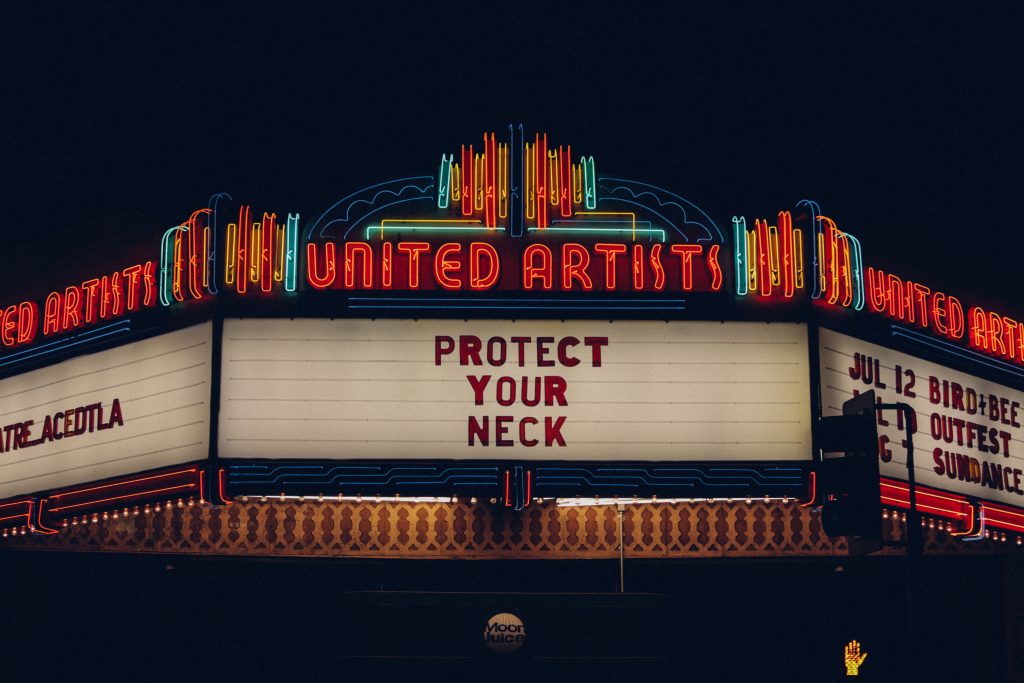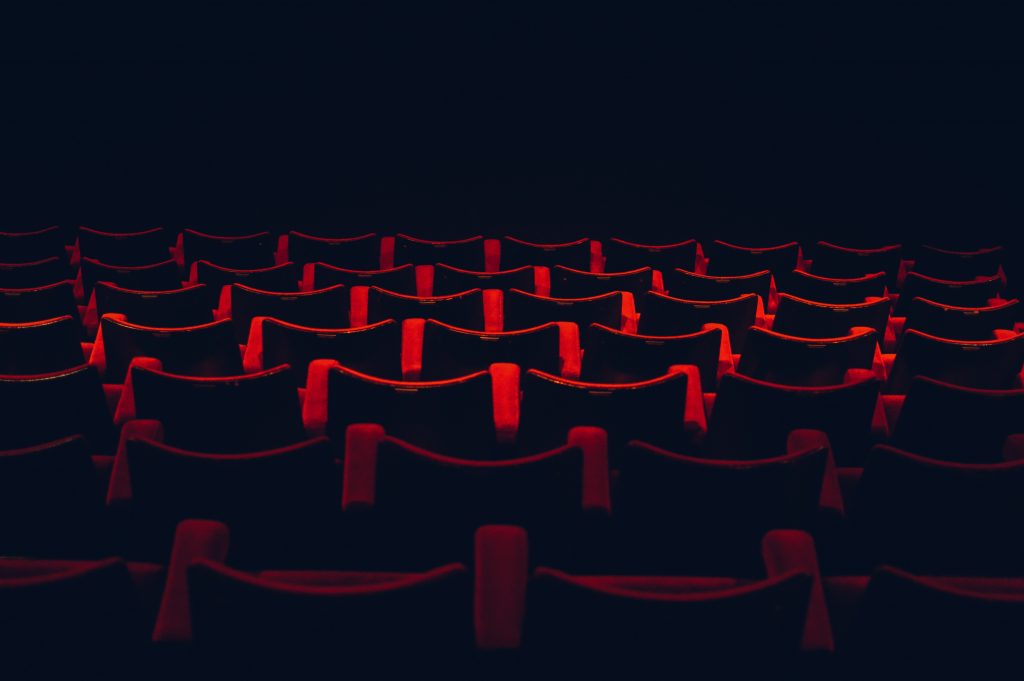“The Hunger Games” – From Book to Movie
This is the first installment of our blog series “Have You Watched a Good Book Lately?” The intention is to track a number of books’ progression from the printed page to the silver screen and assess how well or how badly the filmmakers accomplished each of the adaptations.
We’re starting with “The Hunger Games,” the first installment of Suzanne Collins’ blockbuster YA trilogy. The book was initially published in 2008, and the film was released in 2012. For those of you unfamiliar with the basic premise, here is a brief synopsis adapted from the book cover. 
“In the ruins of a place once known as North America lies the nation of Panem, a shining Capitol surrounded by twelve outlying districts, the losers in a brutal war. Seventy-four years later, the powerful Capitol still keeps the districts in line by forcing them each to send one boy and one girl between the ages of twelve and eighteen to participate in its annual Hunger Games, a fight to the death broadcast throughout the country on live TV.”
From the Source’s Mouth
Let’s start our discussion with one of the main concerns of the books’ energetic fans – how true is the film to the source material? It helps that the screenplay was co-written by Collins herself, although that is certainly no guarantee of success. Just look at J.K. Rowling’s Potter Universe screenplay “Fantastic Beasts and where to Find Them.” Sure, Rowling created that universe, but the film she penned for it was essentially DOA in the “magical quality” department.
With “The Hunger Games,” though, director Gary Ross and the team of writers stayed mostly true to the original while breathing life, along with actress Jennifer Lawrence, into heroine Katniss Everdeen. She was every bit as strong, capable, and deeply flawed in the film as she was in the book, and she became, to her friends, family, District, and all the viewers watching her struggles play out on every television in the country, larger than life. Ross also didn’t shy away from displaying either the disparity between the excessively opulent, hedonistic Capitol and its impoverished Districts or the brutal and very real violence of the leaders’ manipulative and spiteful Games, using distinct lighting, musical motifs, and creative camerawork to highlight and define each aspect.
The filmmakers did add a few interesting touches to the film that were not part of the book. One was the critical turning point in Peeta and Katniss’ pre-Games relationship, where he took pity on her starving in the streets and threw her a loaf of bread from his parents’ bakery. Unlike in the book, where the scene was described once in full, in the film, the writers and director chose to show the sequence as four separate flashbacks. This allowed for the gradual building of visual and emotional tension required in a visual medium. Instead of listening to the litany of speakers talking about the war and the origins of the Games, Ross included a short “documentary” – a visual within a visual – that was more direct, succinct, and impactful than dialogue could ever have been. The director also interwove numerous shots of the Gamemaker’s control room, a location completely absent from the book, with those of the Tributes in the arena. Showing the sophisticated technology set in the surprisingly sterile room was another visual reminder of the Capitol’s cold, calculating sense of superiority, and it allowed for a more in-depth examination of the true antagonists in this fight to the death.

Non-Standard Deviations
Of course, no film is going to be an exact copy of the book – if it were, what would be the point of the exercise? However there were some omissions and outright changes in “The Hunger Games” film that ranged from petty to downright incomprehensible. Two small offences that can be easily forgiven are: 1) We don’t really get to know any of the Tributes other than Katniss and Peeta or see much of the other Districts. This was undoubtedly because, in a 2 ¼-hour movie, there is only so much you can include, and you need to focus on the stars out of financial necessity, if nothing else. 2) Despite the hardships that Katniss and Peeta go through in the arena, both physically and emotionally, neither one looks stressed out or any worse-for-wear by the end of the Games, even though they are practically at death’s door by the end in the book. Again, this is Hollywood, and there’s a prevailing opinion that you have to make the stars look good no matter what.
More puzzling was the omission of any reference to District Thirteen. In the book, the complete obliteration of District Thirteen in the original war was the leverage the Capitol held over the other 12 – a “we will do the same to you if you defy us,” and, for the most part, the Districts submitted to the Capitol’s rule. In addition, this setup of a 13th District takes on great importance in the second and third installments of the books – and even the movies – so it’s hard to understand why the filmmakers mentioned it not even once..
Worse yet were changes made to the last act for no apparent reason. When Katniss, Peeta, and Cato are the last three Tributes remaining, they are attacked at the cornucopia by a pack of Mutts, vicious animals ready to tear all of them limb from limb. That would be a fine obstacle to overcome, but there was a lot more significance to these creatures in the book than made it into the film. In the book, they were a known entity of genetically engineered beasts called Muttations; however, each one now bore the face of a dead Tribute. So not only were Katniss and Peeta being attacked, but it was as if their past actions in these Games had come back to haunt them the way their time in the arena would come to haunt the victors in their future lives. Instead of taking the opportunity to escalate the dramatic tension, the filmmakers opted to go for just another fight along the way.
Perhaps the most important missing element of the film was the pervasiveness of the Capitol’s television presence. Not only were Tributes sent from each District to the Game, but every single person in each District was required to watch the entire drama unfold on the ever-present screens, either in their homes or erected in the main square. And while Katniss and Peeta were being interviewed live at the end following their victory, a carefully edited version of the bloodbath highlighting the goriest moments was being shown to everyone throughout Panem. It made all the frilly clothes, glittery makeup, and good humor seem even more macabre. Viewers of the film could easily come away thinking that most people never knew what had really occurred, while the important point of the story was that it was this forced viewing was another controlled power play by the Capitol to keep the Districts in line.

The Final Cut
So, how did “The Hunger Games” as a movie fare as a book adaptation overall? While there were certainly some puzzling changes and omissions in the movie, the filmmakers did a pretty good job bringing words from a page to visuals on a larger-than-life screen. The movie was certainly watchable, and there was enough thematic content to spark intense discussion long after the lights came up. I’d give it a solid B+.
What do you think? Do you agree? Disagree? Please add your comments in the section below.
– Miriam Ruff, Content Creator, PoetsIN
DISCLAIMER: The opinions discussed in this blog post are solely those of the blogger and do not necessarily represent any thoughts, values, or opinions of PoetsIN and any of its affiliate groups.
Please follow and like us:
“The Hunger Games” – From Book to Movie
This is the first installment of our blog series “Have You Watched a Good Book Lately?” The intention is to track a number of books’ progression from the printed page to the silver screen and assess how well or how badly the filmmakers accomplished each of the adaptations.
We’re starting with “The Hunger Games,” the first installment of Suzanne Collins’ blockbuster YA trilogy. The book was initially published in 2008, and the film was released in 2012. For those of you unfamiliar with the basic premise, here is a brief synopsis adapted from the book cover.
“In the ruins of a place once known as North America lies the nation of Panem, a shining Capitol surrounded by twelve outlying districts, the losers in a brutal war. Seventy-four years later, the powerful Capitol still keeps the districts in line by forcing them each to send one boy and one girl between the ages of twelve and eighteen to participate in its annual Hunger Games, a fight to the death broadcast throughout the country on live TV.”
From the Source’s Mouth
Let’s start our discussion with one of the main concerns of the books’ energetic fans – how true is the film to the source material? It helps that the screenplay was co-written by Collins herself, although that is certainly no guarantee of success. Just look at J.K. Rowling’s Potter Universe screenplay “Fantastic Beasts and where to Find Them.” Sure, Rowling created that universe, but the film she penned for it was essentially DOA in the “magical quality” department.
With “The Hunger Games,” though, director Gary Ross and the team of writers stayed mostly true to the original while breathing life, along with actress Jennifer Lawrence, into heroine Katniss Everdeen. She was every bit as strong, capable, and deeply flawed in the film as she was in the book, and she became, to her friends, family, District, and all the viewers watching her struggles play out on every television in the country, larger than life. Ross also didn’t shy away from displaying either the disparity between the excessively opulent, hedonistic Capitol and its impoverished Districts or the brutal and very real violence of the leaders’ manipulative and spiteful Games, using distinct lighting, musical motifs, and creative camerawork to highlight and define each aspect.
The filmmakers did add a few interesting touches to the film that were not part of the book. One was the critical turning point in Peeta and Katniss’ pre-Games relationship, where he took pity on her starving in the streets and threw her a loaf of bread from his parents’ bakery. Unlike in the book, where the scene was described once in full, in the film, the writers and director chose to show the sequence as four separate flashbacks. This allowed for the gradual building of visual and emotional tension required in a visual medium. Instead of listening to the litany of speakers talking about the war and the origins of the Games, Ross included a short “documentary” – a visual within a visual – that was more direct, succinct, and impactful than dialogue could ever have been. The director also interwove numerous shots of the Gamemaker’s control room, a location completely absent from the book, with those of the Tributes in the arena. Showing the sophisticated technology set in the surprisingly sterile room was another visual reminder of the Capitol’s cold, calculating sense of superiority, and it allowed for a more in-depth examination of the true antagonists in this fight to the death.
Non-Standard Deviations
Of course, no film is going to be an exact copy of the book – if it were, what would be the point of the exercise? However there were some omissions and outright changes in “The Hunger Games” film that ranged from petty to downright incomprehensible. Two small offences that can be easily forgiven are: 1) We don’t really get to know any of the Tributes other than Katniss and Peeta or see much of the other Districts. This was undoubtedly because, in a 2 ¼-hour movie, there is only so much you can include, and you need to focus on the stars out of financial necessity, if nothing else. 2) Despite the hardships that Katniss and Peeta go through in the arena, both physically and emotionally, neither one looks stressed out or any worse-for-wear by the end of the Games, even though they are practically at death’s door by the end in the book. Again, this is Hollywood, and there’s a prevailing opinion that you have to make the stars look good no matter what.
More puzzling was the omission of any reference to District Thirteen. In the book, the complete obliteration of District Thirteen in the original war was the leverage the Capitol held over the other 12 – a “we will do the same to you if you defy us,” and, for the most part, the Districts submitted to the Capitol’s rule. In addition, this setup of a 13th District takes on great importance in the second and third installments of the books – and even the movies – so it’s hard to understand why the filmmakers mentioned it not even once..
Worse yet were changes made to the last act for no apparent reason. When Katniss, Peeta, and Cato are the last three Tributes remaining, they are attacked at the cornucopia by a pack of Mutts, vicious animals ready to tear all of them limb from limb. That would be a fine obstacle to overcome, but there was a lot more significance to these creatures in the book than made it into the film. In the book, they were a known entity of genetically engineered beasts called Muttations; however, each one now bore the face of a dead Tribute. So not only were Katniss and Peeta being attacked, but it was as if their past actions in these Games had come back to haunt them the way their time in the arena would come to haunt the victors in their future lives. Instead of taking the opportunity to escalate the dramatic tension, the filmmakers opted to go for just another fight along the way.
Perhaps the most important missing element of the film was the pervasiveness of the Capitol’s television presence. Not only were Tributes sent from each District to the Game, but every single person in each District was required to watch the entire drama unfold on the ever-present screens, either in their homes or erected in the main square. And while Katniss and Peeta were being interviewed live at the end following their victory, a carefully edited version of the bloodbath highlighting the goriest moments was being shown to everyone throughout Panem. It made all the frilly clothes, glittery makeup, and good humor seem even more macabre. Viewers of the film could easily come away thinking that most people never knew what had really occurred, while the important point of the story was that it was this forced viewing was another controlled power play by the Capitol to keep the Districts in line.
The Final Cut
So, how did “The Hunger Games” as a movie fare as a book adaptation overall? While there were certainly some puzzling changes and omissions in the movie, the filmmakers did a pretty good job bringing words from a page to visuals on a larger-than-life screen. The movie was certainly watchable, and there was enough thematic content to spark intense discussion long after the lights came up. I’d give it a solid B+.
What do you think? Do you agree? Disagree? Please add your comments in the section below.
– Miriam Ruff, Content Creator, PoetsIN
DISCLAIMER: The opinions discussed in this blog post are solely those of the blogger and do not necessarily represent any thoughts, values, or opinions of PoetsIN and any of its affiliate groups.
admin